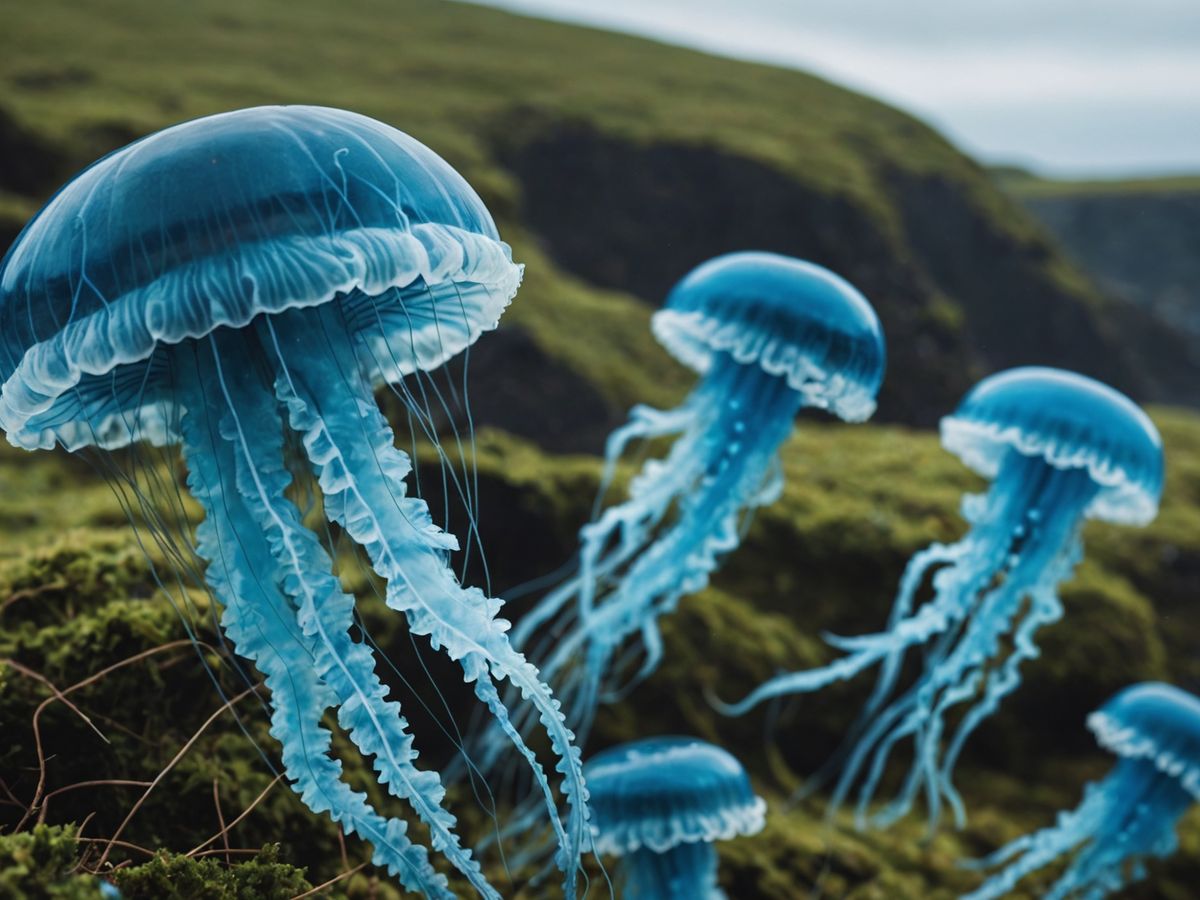Unusual marine organisms known as Velella velella, or By-the-Wind Sailors, have recently washed up on beaches along Northern Ireland’s north coast. These vibrant blue creatures, closely related to the Portuguese man o’ war, have captivated onlookers with their unique sail-like structures.
Key Takeaways
- Species: Velella velella, also known as By-the-Wind Sailors
- Appearance: Small, oval-shaped, vibrant blue with sail-like structures
- Location: Northern Ireland’s north coast
- Cause: Driven ashore by strong winds and shifting currents
- Safety: Mild sting, generally harmless to humans
Unique Marine Visitors
These fascinating creatures are typically found floating on the ocean’s surface, propelled by their sail-like structures. Recent strong winds and shifting currents have driven them ashore, creating a rare spectacle for beachgoers.
Expert Insights
Dr. Jonathan Houghton, a marine biologist at Queen’s University Belfast, explains that Velella velella are quite different from the usual jellyfish found on beaches. These small, oval-shaped organisms, measuring about 5-8cm long, belong to a group called Hydrozoa. They possess a unique sail on top and drift with the wind.
Seasonal Phenomenon
By-the-Wind Sailors typically strand during the spring and early months of the year. The extent and frequency of these events can vary, depending on wind patterns and ocean currents. Major storm systems in the southern US and the Caribbean often amplify this phenomenon, increasing drift across the Atlantic Ocean. There is usually a time lag, with major strandings occurring a few weeks after storm systems subside.
Safety Precautions
Despite their benign nature, marine experts advise against handling these creatures as they can cause minor skin irritation. By-the-Wind Sailors feed on plankton and live entirely on the surface. Their prey are usually small, so they only have a mild sting that is generally harmless to humans, unlike some true jellyfish, which can have painful stings for capturing larger prey.
Natural Harmony
Native to the Azores in the mid-Atlantic, these creatures are actually colonies of tiny individual organisms working together in harmony. Most will likely be washed back out to sea with the next high tide or decompose naturally on the shore.
